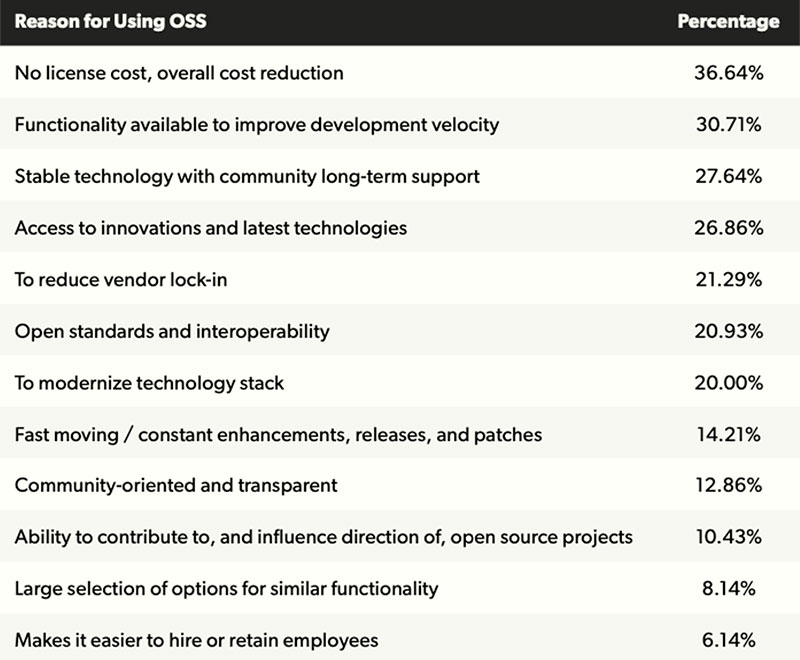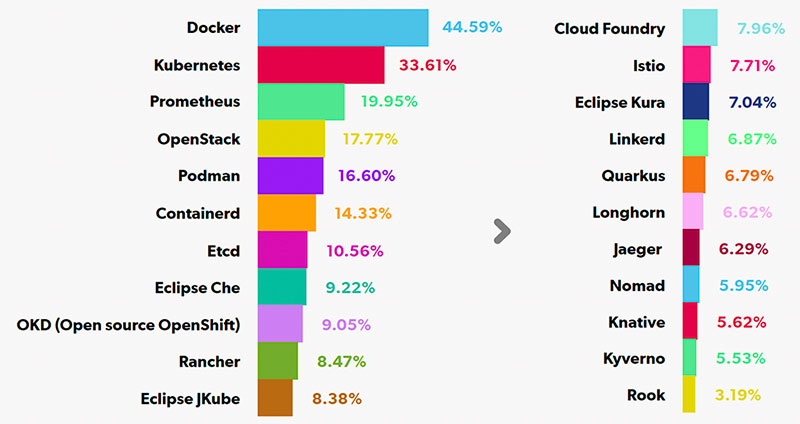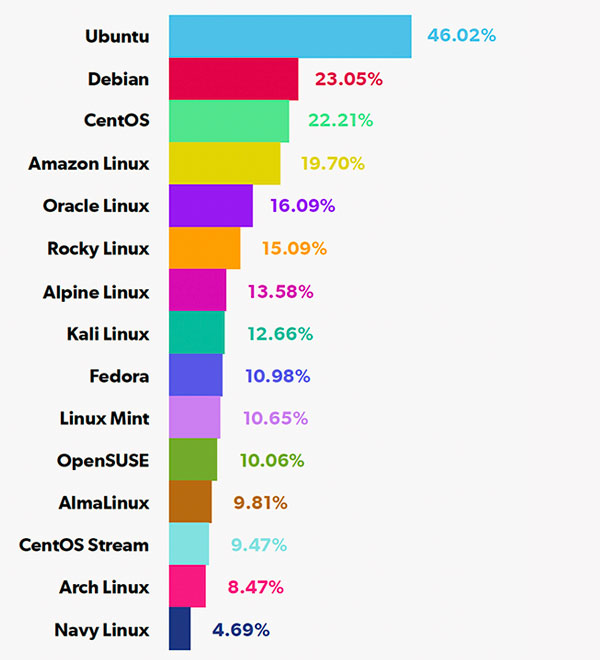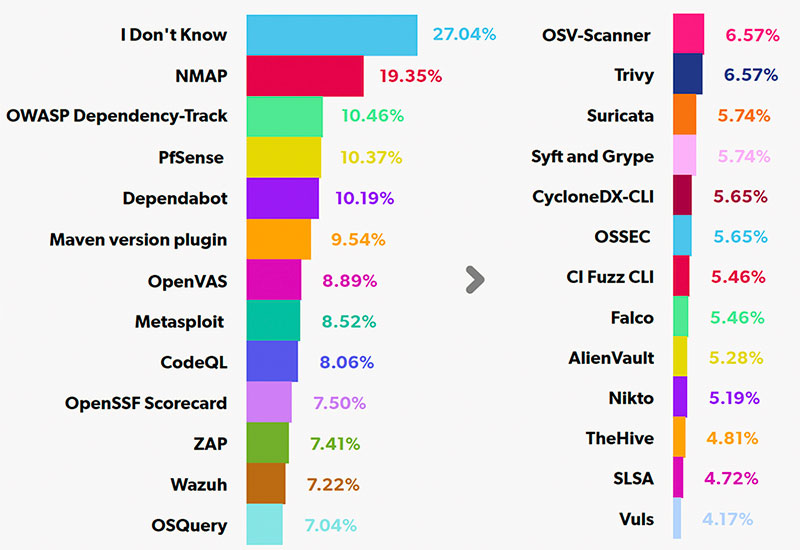Over the past 40 years, the open source software (OSS) movement has been a moving target for detractors and supporters. His philosophy of freely distributing code competed with proprietary software to feed the user fury surrounding the popularity of business and personal computing.
According to various accounts—each with a different time frame spanning the 1960s through the 1970s—hacker culture and academia led to large scale commercial computers with free software. In 1983, programmer Richard Stallman started the GNU Project to write a Unix-like computer operating system that runs on free software. He later founded the Free Software Foundation in 1985 to support the movement.
Today, open source software is used all over the world. Ironically, it is often embedded in commercial code in business and industrial applications and is the backbone of Internet server and network functionality.
Open Source is advancing globally
The open source movement is healthier and more widespread than ever. That view summarizes the results of OpenLogic by Perforce’s State of Open Source 2024 Report on Usage, Market Trends and Analysis published in February, which describes open source as an integral part of organizations of all sizes.
Approximately 95% of respondents across all industry and business sectors said their organizations either increased or maintained their use of open source in the past year, while 33% admitted their use had increased significantly.
Why? No license costs or cost reduction were among the top reasons, followed by reliable functionality. In 2022, cost reduction was the ninth most popular reason for using open source applications. However, according to the researchers, challenging economic circumstances around the world since then may have played a larger role in furthering the reach of open source software in business and industry.

This year’s report, produced in collaboration with the Open Source Initiative (OSI) and the Eclipse Foundation, covers the challenges of OSS adoption, investment and support for organizations using a variety of technology types — infrastructure, cloud technology, frameworks, databases, automation, and more .
“This is truly a new wave of open-source adoption. I’m not surprised that many respondents claim to be using more and more open source because they think it’s true,” said Javier Perez, chief OSS evangelist and senior director of product management at Perforce Software, introducing the webinar. discussing the report.
Continued success of open source
In October 2023, researchers surveyed 2,046 responses from individuals around the world who work with open source software in their organizations. More than two dozen questions polled respondents about their organizations’ use and support of open source software, from large enterprises to early-stage startups operating in numerous industries around the world, according to Perez.
The primary focus of the survey was open source business critical software and security tools. The second focus was new and addressed the growing cybersecurity concerns associated with open source software. Perez said the topic was needed because the US and EU governments have established cybersecurity oversight.
Stefano Maffulli, CEO of OSI, and Gael Blondelle, Chief Membership Officer of the Eclipse Foundation, agreed that adoption of open source software is expanding, with usage increasing by 95% over the past year. Continued success with open source will depend critically on long-term support and maintenance and the need for open standards and interoperability.
Security risks and the need for organizations to keep up with the latest versions are challenges that require solutions. They recognized that regulatory compliance is important, and government agencies are leading the way in creating the regulations necessary for the industry to continue maturing. However, they acknowledged the potential impact of regulatory changes on open source projects.
Key findings on the state of OSS
Among the 95% of organizations that increased or maintained their use of open source software in the past year, 33% said their use had increased significantly. The 5% that reduced their OSS were predominantly early-stage startups, while 39% of those representing large enterprises (500 to 5,000 employees) reported a significant increase.
Geographically, the use of OSS products has grown significantly in Africa, Asia and Latin America.
In last year’s report, software development lifecycle (SDLC) tools and containers took the top two usage spots. But this year, both categories were outperformed by databases and data technologies. Data remains the dominant force in the digital economy. With the rise of artificial intelligence models trained on large amounts of data, it’s not surprising to see data technologies garnering the most attention, the researchers point out.
Many organizations continue to invest in cloud and container technologies. Large enterprises use containers as the preferred architectural model, while small and medium-sized enterprises increasingly rely on data technologies.
Native open source cloud technologies used by organizations

The top five areas of investment in organizations’ most business-critical open source software showed significant overlap. Technologies that received the most votes include Linux, Jakarta EE, Apache HTTP Server Project, Docker, PHP, WordPress, Python, MySQL, Kafka, and Eclipse.
More than 40% of respondents from organizations of all sizes said that keeping up with updates and patches is a challenge. In particular, medium-sized companies (100 to 499 employees) face infrastructure scalability challenges. Project teams are often unresponsive to suggestions or bug reports made by third parties.
The lack of a clear community release support policy significantly affects early-stage startups and mid-sized enterprises.
Linux distributions are increasingly important
Again, in this current survey, Ubuntu is the most common Linux distribution, with 46% of respondents using it at work, an increase of 26% over the previous year. Arguably, controversies in the Linux space — such as Red Hat’s decision to limit access to Red Hat Enterprise Linux (RHEL) code and the rapidly approaching end-of-life for CentOS 7 on June 30 — further favored Ubuntu’s growing adoption.
Interestingly, 22% of those surveyed still use CentOS, making it the third most popular distribution, just 1% below Debian. However, within the technology vertical, 28% remain on CentOS.
Open source Linux distributions used by organizations

According to the researchers, these are most likely companies with many CentOS deployments that haven’t had time to migrate yet.
They also noted that it is still too early to declare a winner in the so-called “Linux wars”. AlmaLinux is a favorite among logistics organizations for vehicles or transport, while Rocky Linux is preferred in the healthcare or pharmaceutical sectors.
Respondents offered alternatives to CentOS nearing end-of-life status, such as Oracle Linux, Rocky Linux, AlmaLinux, CentOS Stream, and Navy Linux.
Not covered by the report, according to StatCounter’s latest data, Linux’s desktop market share grew by an additional 1% over the past eight months, reaching 4.03%. Microsoft Windows tips the scales at 72.13%. Apple’s MacOS is far behind in second place with 15.46%.
Open source security tools often go unused
The State of Open Source 2024 report suggests that a greater focus is needed on security tools and license compliance when using open source technology:
- Only 30% of government or public services report that they do security scans or have security/compliance policies.
- The percentage of organizations with a legal team familiar with OSS licenses decreased by 9%, with North America having the highest rate of legal teams familiar with OSS licenses.
Open source security tools look for vulnerabilities, secure firewalls, and generate SBOMs. They are a growing area due to the prioritization of security tools in the software development phase and in networking and operations.
What open source security tools is your organization using today?

Only 20% of organizations generate bills of material (SBOM). The leading industry in this area is manufacturing, which includes the production of chips.
More than a quarter (27%) of respondents chose “don’t know” when asked what open source security tools they use in their organization.
Sponsorship patterns among leading open source entities
The Linux Foundation, the parent organization that includes foundations such as OpenSSF, OpenJS, and the Cloud Native Computing Foundation (CNCF), receives the most support at 15% of respondents.
However, the researchers noted that the top four organizations (Linux Foundation, Apache Software Foundation, Open Source Initiative, and Eclipse Foundation) are within a percentage point or two of each other, so sponsorship appears to be evenly distributed among these large open source organizations.
All these figures are lower than last year. However, the data shows that North America and Europe have the most sponsorship participation.
Editor’s note: The charts shown in this article come from the State of Open Source 2024 report and are attributed to Perforce Software.